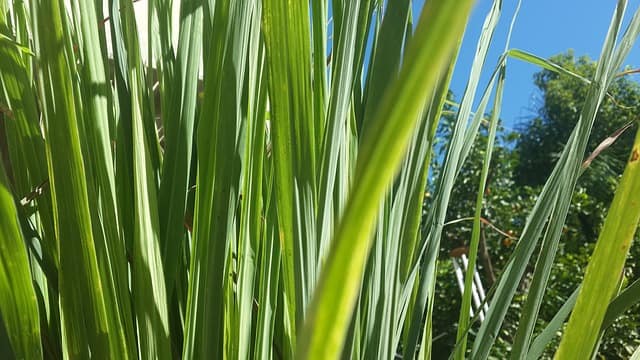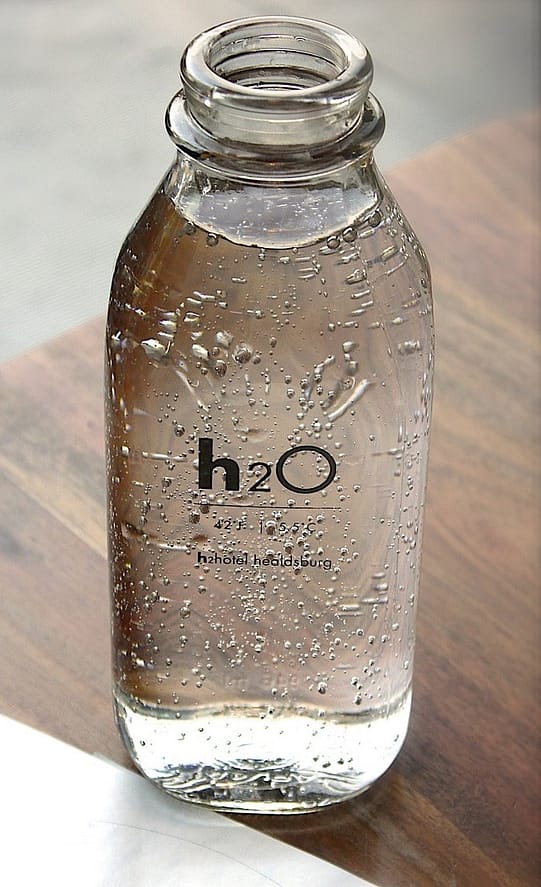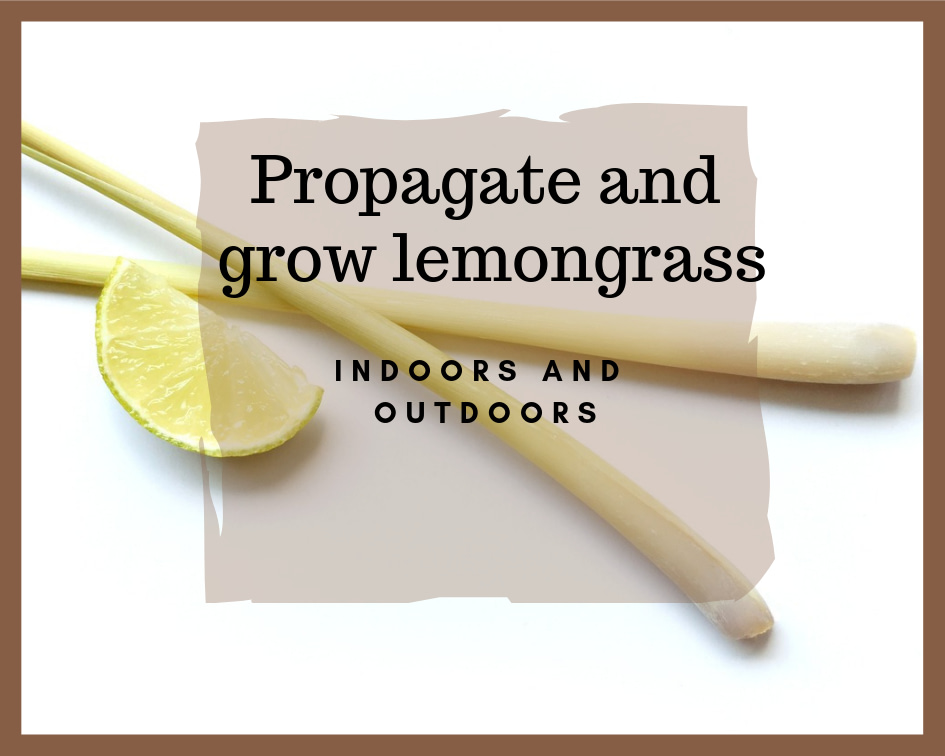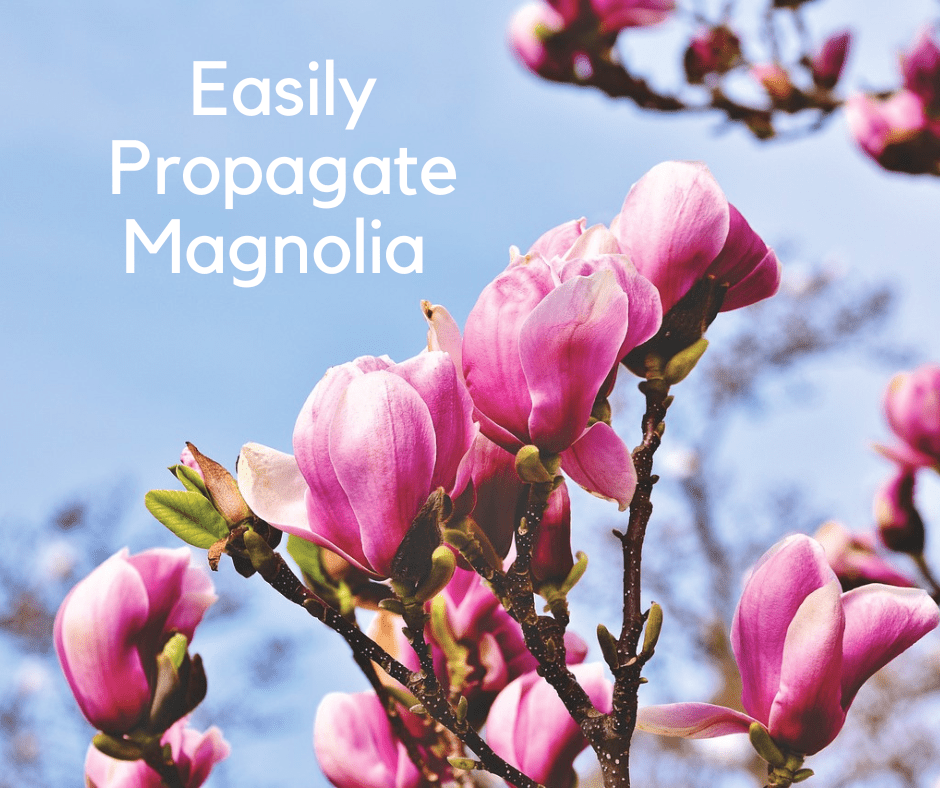This post may contain affiliate links. As an Amazon Associate we earn from qualifying purchases.
Don’t be dissuaded from growing the lemongrass plant when you read elsewhere online that it’s a tropical plant that requires high humidity and very warm soil and air temperatures. Today, you’ll learn how to grow lemongrass indoors or outdoors (if conditions are right).
If you are a fan of Tom Yum soup, or any Thai cuisine, you are familiar with lemongrass (Cymbopogon citrates). If you aren’t familiar with it, see the list of lemongrass recipes at the end of this blog post.
Lemongrass is a perennial grass with a light, lemony flavor. The plants can be purchased as starters, although you’ll have to put in some legwork to find them. Or, you can grow lemongrass from seed.
Ready to harvest four to eight months after planting, get a head-start by starting your seeds or plants indoors.

What you’ll need to grow lemongrass outdoors
What you’ll need to grow lemongrass indoors
Grow lemongrass from seed
Lemongrass seeds are stubborn, which is why most gardeners don’t grow from seed. If you must, however, here’s how to do it. First, you’ll need to buy lemongrass seeds and you can find them at Amazon.com.
- Start lemongrass seeds indoors 8 weeks before the last frost date in your area. You can find that date at Almanac.com.
- Pour equal parts of coarse sand and perlite into a seeding flat (these are the absolute best), pour water over the mixture, stirring to combine it, until it’s soaked. Set the flat aside until it’s finished draining.
- Scatter the lemon grass seeds over the surface of the planting medium and cover them with a 1/4-inch layer of sand.
- Place the heat mat in a bright area but out of direct sun. If using grow lights, place the flat on top of the heat mat, 6 inches below the light source. Set the thermostat on the heat mat to 70 degrees Fahrenheit. Find inexpensive grow lights here.
- Cover the flat with plastic wrap. Check the flat at least every other day to ensure the planting mix remains moist.
- Poke small holes in the bag when the lemongrass seeds sprout. Remove them from the bag three days later.
- Raise the lights as the seedlings grow taller.
When growing lemongrass indoors, keep the plant in a sunny location, keep the soil moist and fertilize it monthly with a 3-1-2 liquid fertilizer but dilute it to half the strength recommended on the fertilizer label.

Root lemongrass in water
- Peel the outer layers off a lemongrass stalk until you hit one that is tender and green.
- Place the stalk in a tall glass, vase or jar filled with enough water to cover the base of the stalk (typically 2 inches or so of water).
- Place the container in a sunny area.
- Pour out the water and add fresh water daily.
It may take up to a month or longer to see roots. When the roots are about 2 inches in length, plant them in a container of moist, sterilized potting soil.

Plant lemongrass outdoors
- Purchase a healthy lemongrass starter plant from a nursery or online. Amazon carries them, here.
- Choose a planting spot that gets full sun for at least 6 hours a day.
- Use the gardening fork to loosen the soil in the planting area to 8 inches in depth.
- Break up large clumps of soil.
- Add 4- to 6-inch deep layer of compost to the area and mix it with the native soil, to a depth of 6 inches.
- Rake the area until it’s smooth.
- Measure the pot in which the lemongrass start is growing and dig the planting hole the same depth but twice the width. If you’ve purchased lemon grass stalks, plant them up to the crown.
- Remove the lemongrass plant from the pot, gently loosen the outside of the root ball and place the roots in the hole. Fill the hole with soil and pack the soil lightly around the base of the plant.
- Space lemongrass plants at least 3 feet apart.
- Water the lemongrass slowly, until the soil is saturated.
- Keep the soil moist but not soggy.
- Fertilize the lemongrass plants beginning in June. Use a 6-2-4 fertilizer, at the rate recommended on the package, and fertilize every month through September.
Learn how to harvest, prep and store your homegrown lemongrass online at thesoffritto.com.
What to cook with your yummy lemongrass
Spicy Chicken and Cilantro Wontons
Vegan Spicy Lemongrass Noodle Soup
Mention of a fertilizer or pesticide, or use of a pesticide or fertilizer label, is for educational purposes only. Always follow the product’s label directions attached to the container you are using. Be sure that the plant you wish to treat is listed on the label of the pesticide you intend to use. And observe the number of days between pesticide application and when you can harvest your crop.




